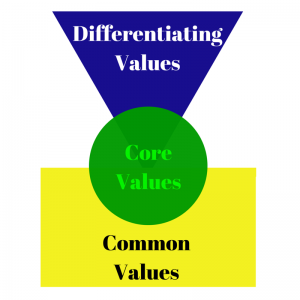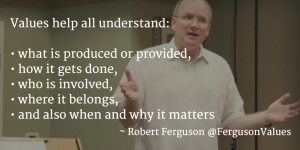How accessible are you and your team?
 How accessible are you to customers?
How accessible are you to customers?
If someone wants to talk to you, have you created hurdles that must first be overcome? Is your first choice to have customers leave you a voice mail (on the office phone and then cell phone), or send you an email, or leave a message with the company receptionist? If it’s important (enough) maybe you’ll call them back…. sometime.
How accessible are you to employees and co-workers? What barriers – physically and emotionally – must they overcome if they need to speak with you? Sure, maybe you have an open-door policy. But how approachable are you – really?
I won’t even ask the question about how accessible you are to sales reps.
And yet… how accessible are you to family members? Can they easily reach you at any time? Maybe it’s super easy for family to reach you and ask you to pick up milk & bread on the way home from work.
When assessing the effectiveness of your marketing efforts, it’s important to consider the impact of accessibility to key people. That means more than just sales people. That includes everyone a customer might want to reach, particularly the leadership team.
The Value of Accessibility
As a differentiating value, Accessibility means easily reached or obtained; approachable.
For sales people, the term ‘gatekeeper’ still exists – someone who protects access to the person you need to see. Not that many years ago, the gatekeeper was likely a secretary or executive admin person. These days, it’s just as likely to be some kind of technology.
In business, the use of voice mail and email was touted as a way of staying better connected. Automated phone systems were touted as a way to help customers get answers faster. But in reality, all this technology actually helps us to become less accessible. Or more candidly, we’re accessible when WE want to be.
It empowers people to hide. And that is bad for business.
Permit me to share two personal stories
Where are the owners?
There once were two owners of a successful small business. They had 35 employees, a really cool office, some name-brand clients, and were living “high off the hog.” But then their business hit a rough patch and they lost a few key clients. Employees started to question their own future there and began finding new jobs.
By the time I met these owners, the business was quickly heading south and there were only 6 employees still working there. The business was on the verge of bankruptcy.
Where did the two owners spend their time each day? Each was holed up in their own office. They refused to take phone calls. They avoided the few remaining employees, who were scattered throughout a huge, empty office – left alone to figure out what to do with client requests. All communication was done through email.
Which came first, the business problems or the lack of accessibility?
When asked how long this had been going on, the employees responded: “A long time. Years.”
Business owners who can’t easily be reached by customers or employees are almost certain to go out of business.
Marketers afraid of customers?
When working with a Fortune 500 company, one particular marketer was pondering why many of their business customers were slow to upgrade their equipment. Specifically, he wondered why laggards were laggards, and if there was anything that could be done to encourage them to upgrade sooner.
I responded by encouraging him to contact 20 customers and ask them. His response? Horror!
You’d think I had asked him to engage in espionage. Calling customers to ‘ask some questions’ was clearly more painful than having a root canal.
So what did he do? He engaged me as the consultant to call these customers on his behalf and ask them questions.
This is when I first became aware of the very real FEAR that exists in the minds and hearts of many marketers – and business leaders – to talk with customers.
I believe there are two issues at work here:
- They don’t know what questions to ask. This might lead to them to appear stupid.
- They’re not sure what problems they might uncover. This might put them in a situation they can’t solve, and appear useless.
So what’s the solution?
If business leaders and marketers would embrace the value of accessibility, others will gladly do the talking. No questions needed – though you’d be hard pressed not to think of some, if you’re listening.
In addition, most people – customers, employees, and even sales reps – just want to be heard. There is no mandate that YOU must solve their problem – though you’ll be surprised how often you’ll know the steps to take to resolve issues.
A little listening goes a long way. It often helps solve problems before they become problems. It opens the door for useful insight into new ways to add value to customers. And it paves the way to recognize the talents of employees and others that surround them.
All because you and your team were accessible – right now.
What else could marketers do to demonstrate accessibility?
How can the value of accessibility make a difference in your marketing?
Today’s value was selected from the “Effectiveness-Influence” category, based on the e-book Developing Your Differentiating Values.







